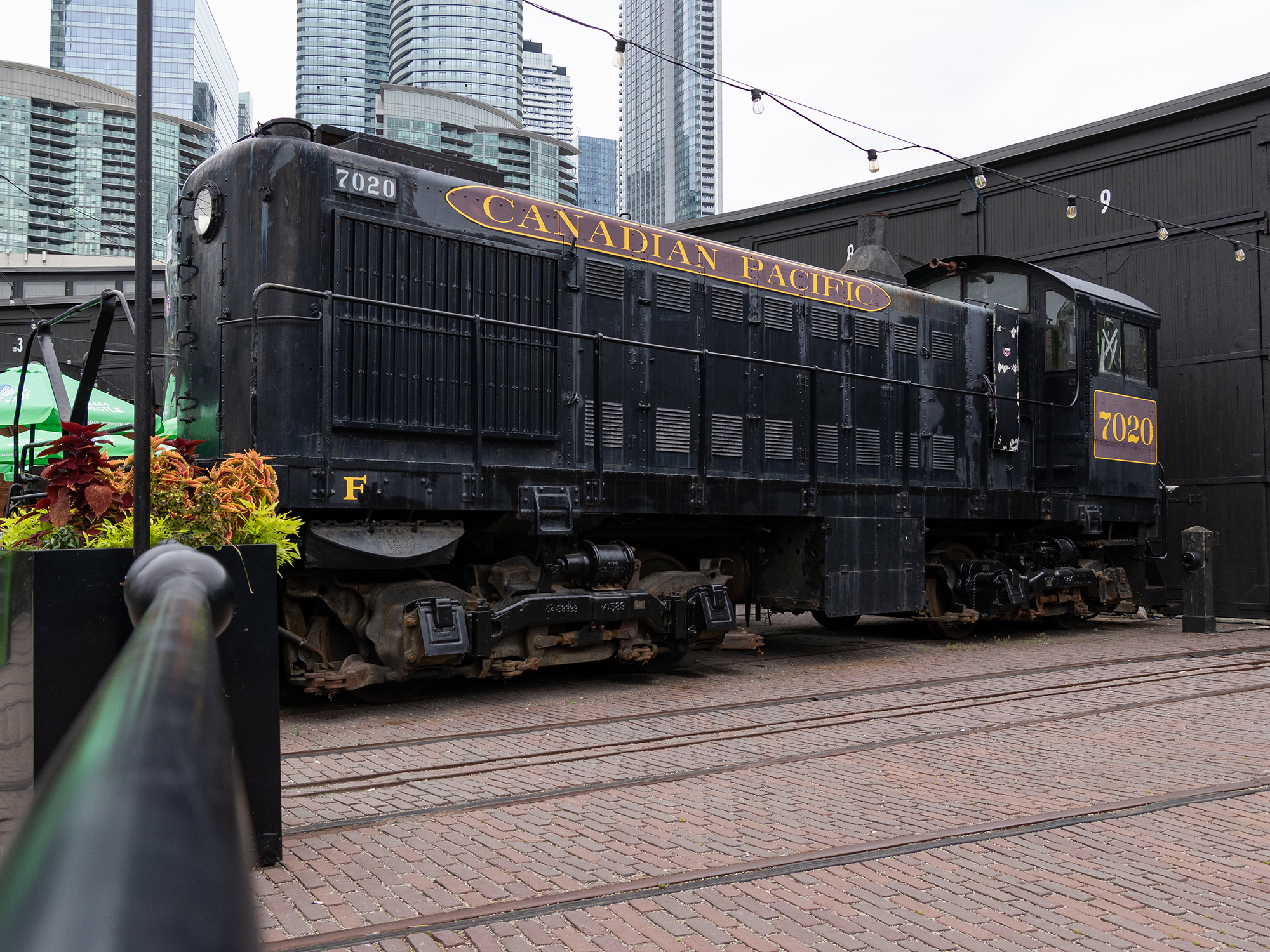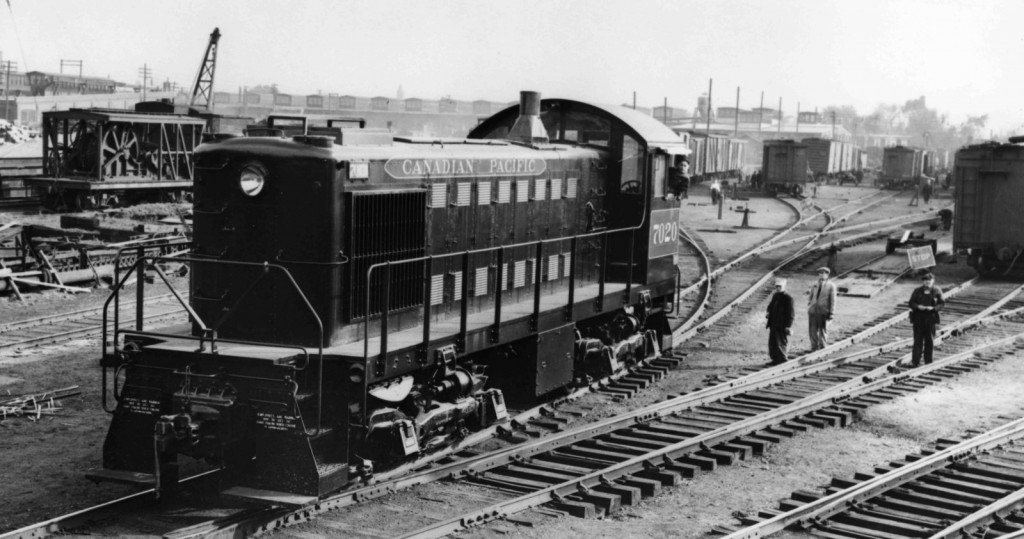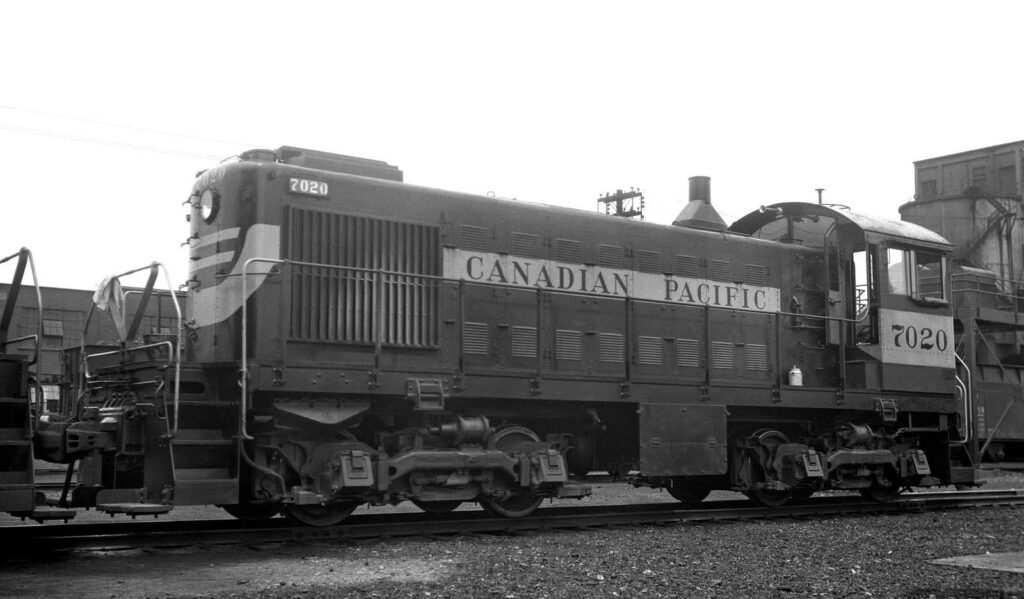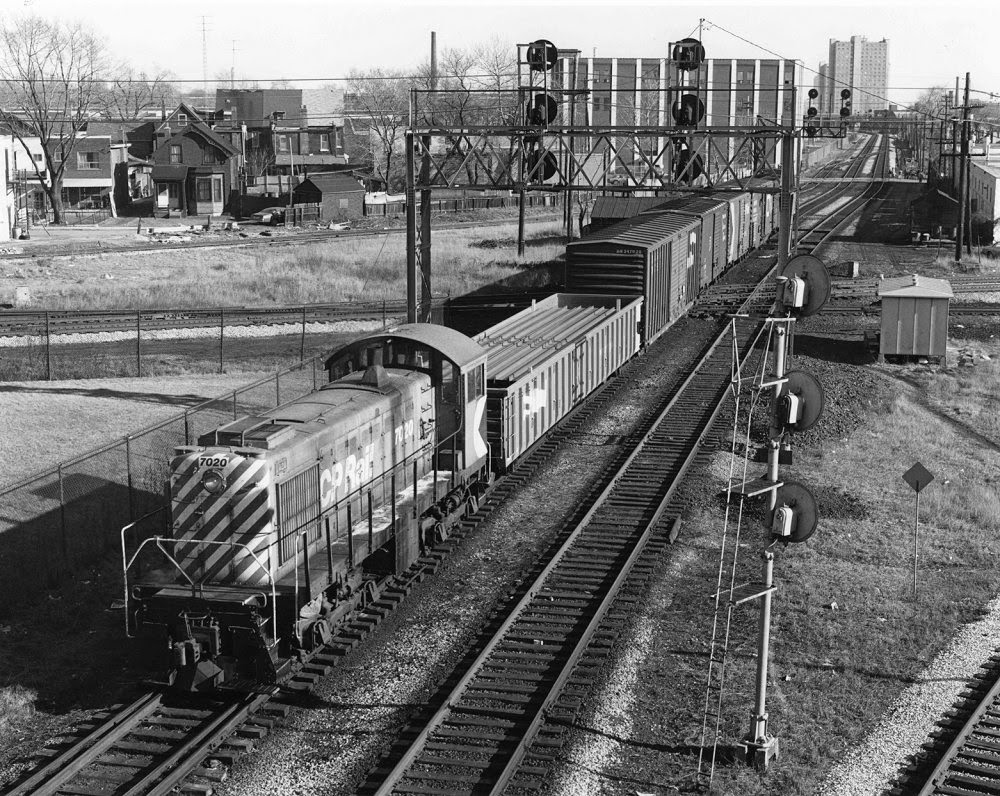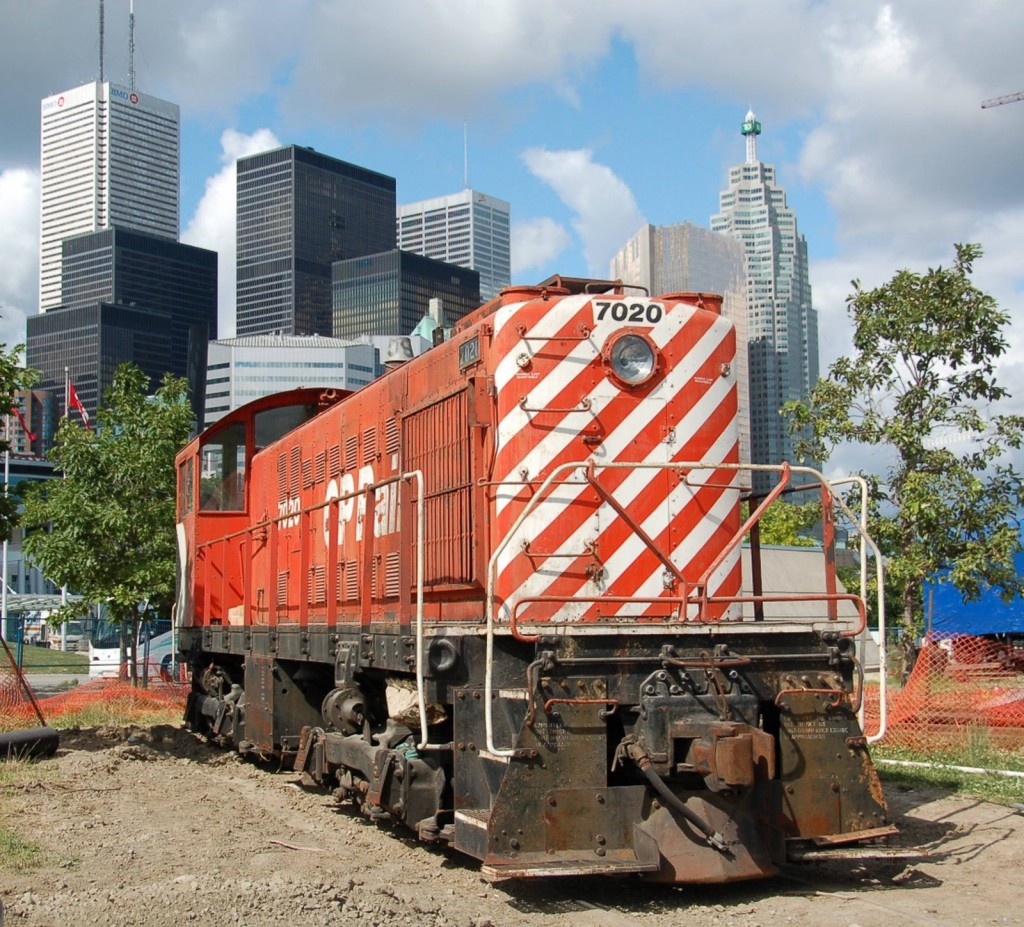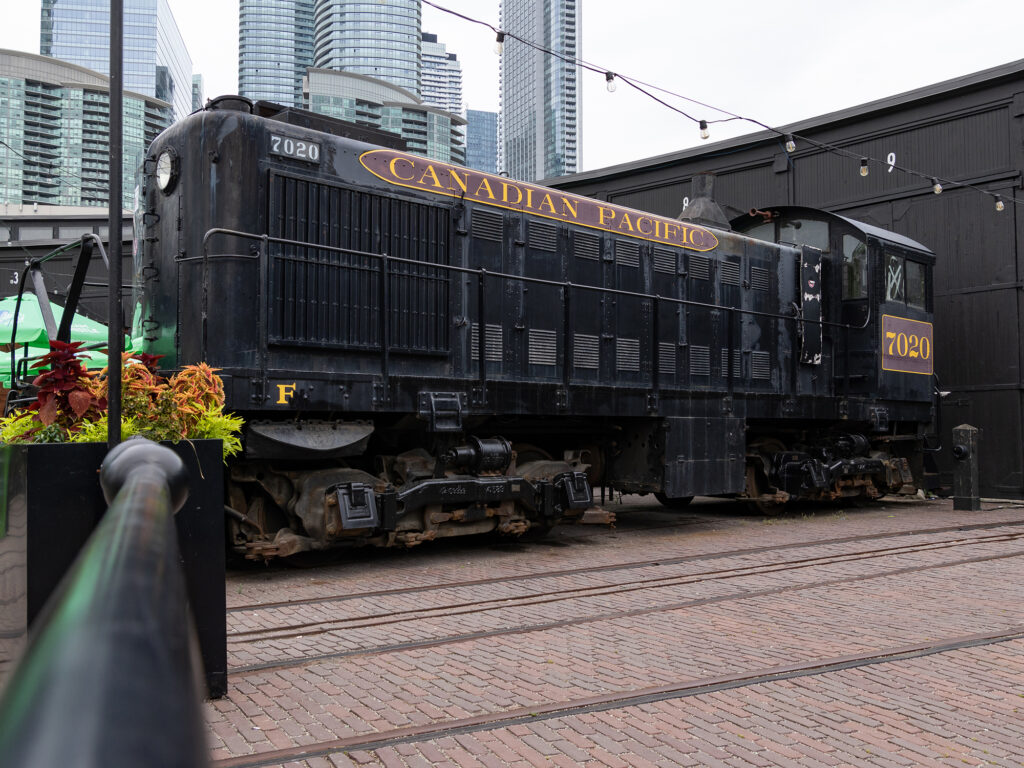Locomotive 7020 was among Canadian Pacific’s earliest diesel engines to be assigned to Toronto, having been delivered to West Toronto Yard in 1944. 7020 would go on to spend most if not its entire lifespan in this assignment, shuffling cars between various yards and industries around the city. The locomotive was retired in December 1985 and subsequently donated to the City of Toronto, who stored it in the John Street Roundhouse for a planned museum on the site. After 25 years, our museum finally opened and 7020 has remained a permanent fixture of Roundhouse Park ever since. Our volunteers set out to bring 7020 back to life in 2014, a goal which they managed to accomplish in the fall of that year. In early 2019 the engine was repainted from the multimark of its later years to its as-delivered 1944 paint scheme.
History
The series 7010-7064 was constructed by the American Locomotive Company in partnership with General Electric at Schenectady, New York, in October, 1944. This was five years before Alco’s Canadian affiliate, Montreal Locomotive Works (partnered with Canadian General Electric in Peterborough), built their first S-2 for Canadian Pacific. In the Alco-GE partnership, the locomotive builder constructed the mechanical portion of the unit’s frame, cab, carbody, trucks or bogies – while the electrical systems , main generator, traction motors and control systems were provided by GE. This partnership continued from the 1930′s into the middle 1950′s, when General Electric began producing their own line of complete locomotives at their plant in Erie, Pennsylvania. Alco and MLW subsequently disappeared from the locomotive marketplace, leaving only General Motors and General Electric to the field.
The switcher has a specific function. That’s why it’s usually smaller, less powerful and slower than its mainline counterparts (like CNR 4803). Within a city or a railway yard, it is switchers which go to each industry and pull out freight cars as required until a complete train is made up. Then the road engines couple on for the long haul at higher sustained speeds (50 MPH and more) until they reach another yard. There another switcher takes over, breaking the train up into sections and delivering them locally as required.
7020 is a “war engine”, acquired to meet the crushing demands of the World War II effort. In the late 1930′s, diesel-electrics started to supplant steam locomotives in the switching function, primarily in urban areas. Steam switchers required two-person crews (an engineer and a fireman), had low availability (spending eight hours or more per day in servicing), and produced noxious, billowing clouds of coal or oil smoke unpopular with city dwellers. Even though diesel-electric switchers drew on the same limited sources of supplies used to construct tanks and warships, their overwhelming efficiency at a time of intense need led rationing authorities in Canada and the United States to permit their continued construction.
The S-2 was one of a family of Alco/MLW switchers produced from 1940 through the middle 1950′s, when the motor and exterior changed. The S-2 was powered by a 539-type super charged six-cylinder inline four-cycle diesel producing 1000 horsepower. Weighing about120 tons, its electrical transmission permitted it a maximum safe speed of 60 MPH. Its trucks or bogies were designed by an engineer named Blunt, and are particularly agile when moving over rough inner-city industrial trackage or tight curvature.
The curvaceous exterior styling of the locomotive was a mild application of Art Deco principles by another Alco engineer, Ray Patten. CPR found the S-2 to be too large a locomotive for its needs and most later switcher purchases were of S-3′s, a similar locomotive lighter in frame weight and producing 660 horsepower from an engine not equipped with a turbo supercharger.
CPR 7020 was assigned to Toronto from delivery. It thus forms an integral part of the story of dieselization, of Canadian railways at war, and of Toronto’s railway story.
Below you can watch a video from 2014 of our volunteers starting the engine of #7020 for the first time since its donation to the city:


